2024 NBA Draft Big Board 4.0
With two weeks left until the draft, here's my final board of the season! And what a run it has been: 70+ in-depth pieces and countless hours of evaluations. Let's close this one out in style.
What’s considered a “weak class” by many, the key to success and finding value is by working harder than the rest. That is why I love this draft class. It’s too early to conclude that there won’t come a star out of this year. Therefore, the emphasis of this board is heavily on the long-term potential and value of scalable roles to multiple positions.
Growing the newsletter to over 350 subscribers, the focus will be on pushing in-depth scouting reports in next year’s cycle as well; 70 in this cycle, and the goal is to have over 100 for the 2025 NBA Draft.
Let’s begin!
The First Round
1. Ron Holland (2005) — G League Ignite
Holland is the most misunderstood prospect of the last few years. While playing as an interior scorer at the high school level, his transition to a ball-handling wing on an NBA-sized floor in the G League demanded its tole.
He was never asked to defend throughout his career, both in high school where he was the main figure, which transitioned to the G League. However, he improved his off-ball defense throughout the season, making the reads but failing to execute them.
In the long run, the physical tools, touch at the rim and offensive creativity can make Holland one of the better wing-scorers in the NBA. That’s what gives him the number one value for me, with his defensive improvement throughout the year as another indicator of success. His late-season injuries came at a bad moment, as he was building the momentum to drive on consensus boards before having to end his season.
2. Donovan Clingan (SO.) — Connecticut
Despite the early-season foot injury. Clingan has shown durability throughout the year, making it feasible that he will continue to be available on an NBA level.
With a lack of good screeners among American big men, Clingan comes at the right moment, as it is likely he can join Adebayo and Davis on Team USA as a good-screening big man offensive schemes can be built around. Clingan going number two on my board has to do with the low-usage character of his game and his being able to use his screening and mobility to create his looks as a play-finisher.
Despite being a below-average rim protector, Clingan is elite at deterring shots at the rim, giving a team value in affording to focus on guarding a team more heavily on the perimeter with him on the floor. In a trend where most NBA teams play four or even five-out offenses, making Clingan a potential high-end value in terms of defensive ratings improving with him on the floor.
If Clingan can play closing minutes while staying on an NBA floor and improving as a free-throw shooter, he’ll return solid top-five value in the long run. For more details on his NBA role, see the in-depth scouting report below.
3. Stephon Castle (FR.) — Connecticut
Wings with two-way impact is what is a must-have to build winning teams. Castle is the best connective piece in this year’s class. The value that makes him a third-overall pick is in the scalability of his role.
His handles and positional size led to him being put in a box as a point guard. That’s not his game. His NBA role will consist of growing from a floor-spacing ball-mover who impacts the game with his defense. Especially early on. The best fit is to put him alongside a scoring-heavy guard or wing taking away some inefficiencies of his jumper, thus keeping a neutral offensive rating with him on the floor.
His NCAA tournament performance, especially with his jumper falling, will give more confidence to NBA decision-makers in determining how real his shot is and can be. That’s the foremost thing missing in his profile where the NBA has to step up and help him develop. If he improves on that end, he can end up as a two-way wing in his prime, one of the more valuable archetypes thus leading to a higher draft value.
4. Tidjane Salaün (2005) — Cholet Basket
In my early-season scouting report, I called Salaün the best long-term French prospect in this class, with the chance to grow to a top-ten pick. He has exceeded expectations throughout the year. At 6’8.75” in socks, Salaün has the attitude, improving handles, and offensive creativity to be a high-end wing scorer in the future.
His role expanded from a low-usage spot-up shooter to demanding more usage and ball-handling responsibilities. While being on NBA radars for several years, his body fastly developed to him having the positional size to play both as a three, and a four in the future if he gets stronger. Filling his frame and improving his touch at the rim are the two areas of development that will determine the long-term outcome.
While being one of the youngest prospects in this class, a team is swinging for the fences by drafting him. Therefore he must go to a team that can afford to invest time in him, with Washington and Utah being two good destinations.
To see where I was early in the year, see the in-depth report below:
5. Alexandre Sarr (2005) — Perth Wildcats
In comparison to Clingan, Sarr’s NBA role is much more complicated. His defensive potential as someone who can guard every spot on the floor is the unique selling point among the two. However, the offensive value with Sarr is where his boom or bust potential is at.
As a utility player who needs to be set up in the early stages of his career, Sarr shows average touch around the rim at best. His three-point shot is still developing and for him to succeed, he has to earn more on-ball reps throughout his career. While it’s true his long-term potential is way above Clingan’s in terms of a total package on both ends, Sarr is in a different team context.
Due to the must-needs in terms of his hands as a roller, his touch as a play-finisher, and thus more importance on a developing three-point shot, there’s more risk in his profile among the two. The reason he falls to five versus being the consensus number one is the likely outcome of a utility player, instead of a team’s number one option.
6. Rob Dillingham (FR.) — Kentucky
By far the best prospect in terms of offensive value. Fantastic ball handler with the most advanced offensive creativity in the class. For the NBA, a team drafting him must put the ball in his hands and make him the number one option.
The reason why he falls outside of the top five is the physical limitations in his profile, leading to a team sacrificing a part of their defensive rating to fit him in. To build around him, his offensive production must make up for the lack of offensive production from other positions, where plus-defenders have to be plugged in to balance out the overall defense.
I’m not a fan of the “lack of size, will be targeted on defense” talk, due to Dillingham showing toughness and lots of effort when he’s defending. He’s a decent screen navigator but lacks the physical strength to make an impact on that end. His overall value can exceed his draft range, especially if a team figures out how to build around him, as I project Dillingham to be the first player in this class to become an All-Star.
7. Matas Buzelis (2004) — G League Ignite
Buzelis has a reputation as a ball-dominant scoring wing due to his dominance at the high school level. That’s not his NBA game. The G League Ignite helped him contextualize his role and be more of a team-first player.
With well-improved handles compared to last summer, Buzelis’ interior scoring is likely to translate due to having decent offensive creativity and good athleticism. He’s fluid and at 6’8.75” in socks, Buzelis fits in the modern transition to positionless basketball.
It’s not possible to determine what his exact role would look like. Therefore, the team context and destination are key due to his fitting multiple needs. With a developing three-point shot and an improved overall game, Buzelis has to earn his on-ball reps in the NBA by first showing that he can be an effective option on lesser usage.
An area of risk for NBA decision-makers to work on is his frame. His lack of upper-body strength will limit the positions he can play on early in his career. A majority of his NBA success will be determined by improving his body via an NBA strength and conditioning program and growing to a scoring wing from a lower-usage off-ball role.
8. Cody Williams (FR.) — Colorado
Freshman production is valuable when given context to it. The case for Williams to end up as a top-ten pick is his excellent off-ball scoring; the base for his ascending to a scoring guard in the NBA. Despite having an interior-heavy game, Williams got to an efficient double-digit scoring season at Colorado while playing behind seniors being the team’s top options.
It’s unfair to mention his brother ascending to an All-Star. Although it partially boosts his draft value, it’s crucial to focus on the type of outcome Cody will have, without mentioning his brother. The area that will return top-ten value is Williams improving his handles and growing into a role where he’ll be a self-creating scorer—an area where he has shown flashes in his rookie campaign at Colorado.
For more details on his NBA role, see the in-depth scouting report below.
9. Zaccharie Risacher (2005) — JL Bourg-en-Bresse
Risacher started the year in my top three. His physical tools, mobility, and projectable high-volume shooter make him the perfect prospect to slowly develop into a high-end NBA wing. That is if everything clicks, and for that to happen, Risacher has a few areas to develop.
NBA stars have one thing in common: an attitude. In Risacher’s case, he’s too modest and doesn’t act like a team’s number one option. His offensive creativity is another area of concern. His production was within the flow of the offense, and he’s accepted the role that is given to him on every team he has been so far in his career.
The reason why NBA executives like Risacher so much is the combination of his physical tools and his improvement in terms of offensive creativity. Regardless of that development, Risacher is one of the top shooters in this class who will thrive as a rotational piece, while being able to grow into a specialist alongside a scoring number one and two option on a team. The reason why he fell to nine is the lack of development in the above-mentioned most crucial areas of his draft profile.
10. Devin Carter (JR.) — Providence
NBA decision-makers value toughness and team-first players. And if you can scale that type of game up, a franchise will bet on a player, regardless of age or class. At 6’2.25” in socks, Carter ranked 10th in the entire country in total defensive rebounds. While doubling his volume, Carter shot close to 38% from three while putting up almost 20 points per game.
As an upperclassman, production becomes more important due to teams tending to invest less developmental time. In Carter’s case, he can play alongside a scoring-heavy NBA guard on day one. The scalability in his game is in his playmaking and connective passing. That’s an area his NBA team will have to invest in developing. If everything clicks, Carter can be a starter in the NBA for a very long time, and that’s worth a top-ten pick.
11. Reed Sheppard (FR.) — Kentucky
His accomplishments at Kentucky cannot be taken away from him. Regardless of the hype, the role he’ll have on an NBA floor is a tough one to determine. He doesn’t have the guard skills to be a one, or the size to play as a full-time two. The positives in his profile are that he has a great feel for the game and his defensive instincts make the game much easier for him. His decision-making as a connective passer is very good and with his efficiency from three, there’s a role for him on day one.
The lack of size and physicality forces a team to add size and interior scoring around him, lowering his draft value. It’s tough luck for Sheppard, as his entering the league a decade ago would have made him a surefire top-three pick. It’s easy to fall in love with the numbers, but putting it into the context of his role makes a top-ten selection a bit too rich for my taste.
12. Isaiah Collier (FR.) — USC
While built like an NFL linebacker, Collier plays much bigger than his 6’2.50” in socks might indicate. Despite a lack of consistency in his jumper, his creativity, handles and live-dribbling playmaker led to him keeping his lottery value.
His shooting being underwhelming at the NBA Draft Combine shouldn’t impact his stock too much, therefore I kept his name in the lottery as the archetype and valuables he brings to the table are what various teams in the league still look for in their leading guard depth. Collier’s timing to enter the NBA comes at the right moment.
For more details on his NBA role, see the in-depth scouting report below.
13. Tyler Smith (2004) — G League Ignite
Smith is the perfect analytics-friendly four who will thrive in a low-usage role in the NBA. His value is he complements a high-usage guard or wing with his floor spacing and cutting. Sometimes it’s just as easy as that. He wasn’t asked to defend at a high level in the G League or high school. Therefore, the untapped potential of his switchability and guarding in space is what teams could unlock.
His mobility and athleticism are what teams are buying outside of his three-point shot. I don’t use comparisons often, but adding a Cleveland Cavaliers version of Channing Frye is worth a flyer late in the lottery.
14. Dalton Knecht (SR.) — Tennessee
We complete the lottery with Knecht, the most advanced three-level scorer in the class. Despite his consistent production, the biggest question mark in his profile remains his value when his offense runs cold. He’s a ball-mover at best and requires high usage to get the best out of him.
With the NBA’s trend of adding multiple ball handlers to a roster, his size and athleticism bring versatility to a team, as he can guard up to three positions due to his bulky build. That’s an area that makes his interior scoring so effective as well. In terms of early impact, Knecht has the opportunity to become productive right away while being expected to start very early on in his career.
15. Pacôme Dadiet (2004) — ratiopharm Ulm
Dadiet is one of the better wing prospects among Europeans in the last few years. With smooth ball handling and offensive creativity, Dadiet can grow into a scorer early on in his career. Defensively, he has many areas of development which are described in the in-depth piece below.
Teams in a rebuilding phase are where Dadiet fits best, as it will take some time to grow into a full-time starter. The positives in his game are the ease in him creating interior scoring opportunities for himself. With a bulky build, he still shows signs of functional athleticism as a separation-creator, giving clear signs that there is much-untapped potential in there, leading to him rising to the first half of the first round.
16. Nikola Topić (2005) — KK Crvena zvezda
I have been lower on Topić throughout this whole draft cycle, with the most important nuance being a misleading team context at Mega Basket. His NBA traits are a given, as his level of live-dribble playmaking and execution of reads makes him a special playmaker. His craftiness, handles, and ability to create his looks purely with his fundamentals make him a candidate to earn a starting role in the future.
However, the lack of physical tools and the measurements don’t help Topić’s draft stock. Defensively he has a long way to go, where he showed to struggle against better athletes. The nuance here is that he's one of the youngest players in the class and still is growing into his body. Regardless, the value at 16 can become much better if Topić manages to grow into a neutral defender in the upcoming years.
17. DaRon Holmes II (JR.) — Dayton
Holmes II is being seen as the classic tweener as he’s suited to play both as a four and a five. In terms of fundamentals, he’s the most gifted big man in this class, ready to play on day one. Despite having first-round value in last year’s draft, and coming back to school to work on his passing and three-point shooting, Holmes II emerged as one of the most complete players in this class.
With long-term potential being a heavy emphasis on how this board is built up, it’s realistic that Holmes II will be selected higher than 17. For more details on his NBA role, see the in-depth scouting report below.
18. Kel’el Ware (SO.) — Indiana
At 6’11.75” in socks and his level of athleticism, Ware has the most long-term potential among all big men in this class. The area of development in his case remains the motor which has held him back in last year’s draft cycle as well.
Despite a productive year at Indiana, he’s very raw on the defensive end where a team has to show patience in developing him to a full-time starting five. He has gotten in much better shape, measuring out about fifteen pounds less during the Combine.
Ware has various aspects of his game to hang his hat on. His falling to 18 has to do with his offense value being limited to play-finishing early on while not offering much value on the defensive end. Ware must go to a rebuilding team that can offer him time to develop.
For more details on his NBA role, see the in-depth scouting report below.
19. Jaylon Tyson (JR.) — California
Tyson is one of the more complete wing prospects among the experienced players in this class. While showing a scaled-up role as a complete scorer at California, Tyson makes his shift to the NBA feasible with him thriving on a catch-and-shoot role in his years as an underclassman.
NBA teams are buying offense with Tyson, as his size, and smooth ball handling bring much-needed scoring to a second unit, helping a team to maintain their offensive rating. His craftiness helps him to get downhill effectively, adding value to his profile in terms of growing into a high-end two-level scorer in the NBA.
While creating angles is his value on offense, his great body control and fluid hips give him tools to grow as a defender in the next few years.
20. Trentyn Flowers (2005) — Adelaide 36ers
Everyone has ‘their guy’ in a draft. And Flowers is that for me in the 2024 NBA Draft. An underrated athlete who brings paint touches in volume to the league. He’s still developing his three-point jumper, which was one of the swingskills this year. While showing he can handle an NBA-styled pace, Flowers’ value is in his intangibles.
Outside of his great feel for the game, his touch around the rim combined with how easily he gets there give him a clear role as a guard in the NBA. Adding live-dribble execution of playmaking reads could lead him to become a starter in a few years. For more details on his NBA role, see the in-depth scouting report below.
21. Jared McCain (FR.) — Duke
McCain was a tough evaluation for me. I’ve went back-and-forth between him as a guy for 2025, or him as a first-round pick. In the second half of conference play, McCain proved me wrong and showed why he’s a legit one-and-done prospect.
The most crucial part is his maturity, especially in the latter stages of Duke’s season. When his teammates didn’t take the reigns, McCain showed that he could take over a game and lead his team to victory. Two 30+ scoring games in the NCAA Tournament are other value-risers in his profile.
In the NBA, McCain’s feel for the game as a defender and versatile shooting will land him a long-term job in a team’s rotation. My favorite fits for McCain are Philadelphia and Miami.
22. Ryan Dunn (SO.) — Virginia
One of the best defenders in college basketball. Period. But one who is misunderstood when it comes to his offense translating to the NBA. He has the tools to be one of the most complete NBA defenders, with crucial elements such as connective passing, cutting, and eventually his three-point deciding the outcome of his career.
I dedicated a super-in-depth piece on how he will transition to the NBA level, potentially outplaying his draft value at 22 here.
23. Ajay Mitchell (JR.) — UC Santa Barbara
With his experience, scoring prowess, and high basketball IQ, Mitchell will impact a team’s offense on day one. In last year’s cycle, he was highly touted but needed more consistency in both his threes off the catch and self-created ones off the dribble. That’s an area where he worked on in his junior year.
At 6’3.25” in socks, Mitchell fits in a rare mold of a high-feel guard with the needed athleticism to succeed in the NBA. That’s the main reason for him cracking the first round.
I dedicated a whole in-depth piece on his NBA role below.
24. Ja’Kobe Walter (FR.) — Baylor
At the high school level, Walter showed high-tier slashing and shooting versatility which was a big reason for him being one of the highest recruits in the 2023 class. His value for an NBA team comes with his picture-perfect shooting release that’s consistent on each shot type.
Walter is very good at getting to his spots in off-ball sets, mostly by running off screens. Combined with his excellent pull-up shooting ability, is the perfect role player for most NBA teams that need shooting depth.
Defensively, Walter has areas to clean up. His lack of physicality made it easy for opponents to collapse the Baylor defense by putting him in pick-and-rolls or using off-ball screens. If his screen navigation improves, Walter will likely outperform his draft position. As of now, a team will have to invest reps in improving him as a defender, which costs him some draft value.
25. Jaylen Wells (JR.) — Washington State
After scouting him intensively at the end of February, I dedicated an in-depth piece on his NBA role before the NCAA Tournament. While growing to a crucial part of a winning high-major team, Wells earned All-American honors at the Division II level. In a nutshell: NBA teams are buying a potentially elite shooter late in the first round here.
Despite the jumper-heavy scoring diet, Wells’ three-point shot is one of the most consistent and reliable in the whole country. As the season progressed, he improved in utilizing his shooting gravity by improving his passing game, leading to his assist numbers increasing in the last ten games of the season.
As a team defender, he gives NBA decision-makers the most value. After he turned himself into one of the Cougars’ most important players, Wells got more comfortable in taking his role as a leader on the court. His awareness as an off-ball defender combined with his decision-making make it feasible for him to be able to become an above-average team defender in the future.
For more details on his NBA role, see the in-depth scouting report below.
26. Pelle Larsson (SR.) — Arizona
Despite much depth among connective pieces in this class, there are very few with Larsson’s versatility on both ends. While the numbers support his NBA-ready shooting as the base for the rest of his profile, Larsson going pro comes at the right moment. With teams experimenting more with inverted pick-and-rolls and positionless basketball, Larsson is a valuable piece to creative teams who want to run personalized schemes.
Coming from a basketball family, Larsson has a fantastic basketball IQ that is proven in how well he rotates on defense combined with his leadership. At a senior-studded Arizona team, Larsson was one of the defacto leaders which will translate well at the NBA level. With teams valuing toughness and playing hard, Larsson is ready to fit into the rotation of almost every winning team in the league.
The Knicks are a favorite fit for Larsson. I dedicated a whole in-depth piece on his NBA role below, going into more detail on the above-mentioned areas.
27. Terrence Shannon Jr. (SR.) — Illinois
Shannon Jr. is one of the strongest scorers of the last few draft cycles. He has a mature game ready to contribute in every offensive scheme he’ll be placed into. The versatility in his offense comes with him scaling his role down to serving as a ball-moving closeout attacker and shooter if needed, while being able to scale up to being a leading ball handler.
Consistency has been a struggle for Shannon Jr. in prior draft cycles. That’s the biggest improvement in his senior campaign. Combined with his improved team defense, Shannon Jr. is set to be one of the steals in the 2024 NBA Draft as one of the early producers among his peers in this class.
For more details on his NBA role, see the in-depth scouting report below.
28. Isaiah Crawford (SR.) — Louisiana Tech
With more NBA teams preferring wing-sized ball handlers who measure out well, Crawford is already having NBA teams considering drafting him this summer. His combination of knowing his physical tools and how to use them to his advantage, combined with his ability to play fast and knock down open shots makes it possible for him to have a role in a team’s rotation early in his career.
The two most crucial areas of development are Crawford’s tendency to ball-watch on defense at times while overdribbling on offense. All fixable areas were partially caused by getting in a comfort zone too much as he only played in the Conference USA in his five-year collegiate career.
For more details on his NBA role, see the in-depth scouting report below.
29. Baylor Scheierman (SR.) — Creighton
In my latest in-depth piece where I called him a two-way role star. There are very few prospects with Scheierman’s feel for the game, shooting prowess, and two-way game at 6’6.25” in socks.
A franchise is buying a clear-cut rotational piece in its intangibles. While offering excellent rotations and reads on defense, Scheierman played a connective role at Creighton despite being one of the leading scorers. Quick decision-making without long ball touches makes his game ready for the NBA.
Generally, white players don’t get credited for their athleticism, another area where Scheierman can continue to grow as a defender, especially if he continues to get stronger in the upcoming years.
For more details on his NBA role, see the in-depth scouting report below.
30. Zach Edey (JR.) — Purdue
The most dominant rim presence I have ever seen play college basketball. He doesn’t have to shoot threes in the NBA to succeed. While I was skeptical of him having an NBA profile a year ago, he has proven me wrong as there is a role for him at the next level.
His conditioning is off the charts. He can emerge as more than a situational utility piece, but that’s a solid start to build something in the league. If he plays up to 15 minutes a night crashing the glass and punishing mismatches inside with his hooks over his left shoulder, he can easily stick in the league for a long time.
The Second Round
Thank you for making it so far! Compared to the first round, we will speed things up to keep the reading time comfortable.
Did you like what you saw so far? If yes, please consider subscribing! To celebrate the draft, here’s 20% off on me. At over 70 in-depth scouting reports, I have you covered for this cycle, with much more content coming up for the 2025 draft cycle and in-depth NBA role projections for the newly drafted or signed players out of this class.
31. Trey Alexander (JR.) — Creighton
32. PJ Hall (SR.) — Clemson
33. Jonathan Mogbo (JR.) — San Francisco
34. Cam Christie (FR.) — Minnesota
35. Ulrich Chomche (2005) — NBA Academy Africa
36. Kevin McCullar, Jr. (SR.) — Kansas
37. Yves Missi (FR.) — Baylor
38. Kyle Filipowski (SO.) — Duke
39. Reece Beekman (SR.) — Virginia
40. Jaedon LeDee (SR.) — San Diego State
41. Oso Ighodaro (SR.) — Marquette
42. Justin Edwards (FR.) — Kentucky
43. Izan Almansa (2005) — G League Ignite
44. Juan Núñez (2004) — ratiopharm Ulm
45. Adem Bona (SO.) — UCLA
46. Tyler Kolek (SR.) — Marquette
47. Tristan da Silva (SR.) — Colorado
48. Bronny James. Jr. (FR.) — USC
49. Melvin Ajinça (2004) — Saint-Quentin Basketball
50. Jaylin Williams (SR.) — Auburn
51. Harrison Ingram (JR.) — North Carolina
52. Jamal Shead (JR.) — Houston
53. Bogoljub Marković (2005) — Mega Basket
54. Dillon Jones (SR.) — Weber State
55. Tristen Newton (SR.) — Connecticut
56. Nikola Durišić (2004) — Mega Basket
57. Mantas Rubštavičius (2002) — New Zealand Breakers
58. Bobi Klintman (2003) — Cairns Taipans
59. Noah Penda (2005) — Vichy-Clermont
60. Yongxi Cui (2003) — Guangzhou Loong Lions
Thank you!
Thank you for making it so far! I hope you enjoyed this piece. With much more content coming up, feel free to consider subscribing to the newsletter.
For reference: here are the first three big boards of this year’s draft cycle:
1.0 — Link to X - September 2023
2.0 — Link to X - February 2024
3.0 — See embedded post below — April 2024

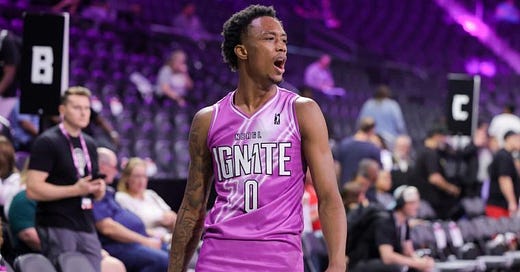



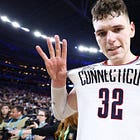
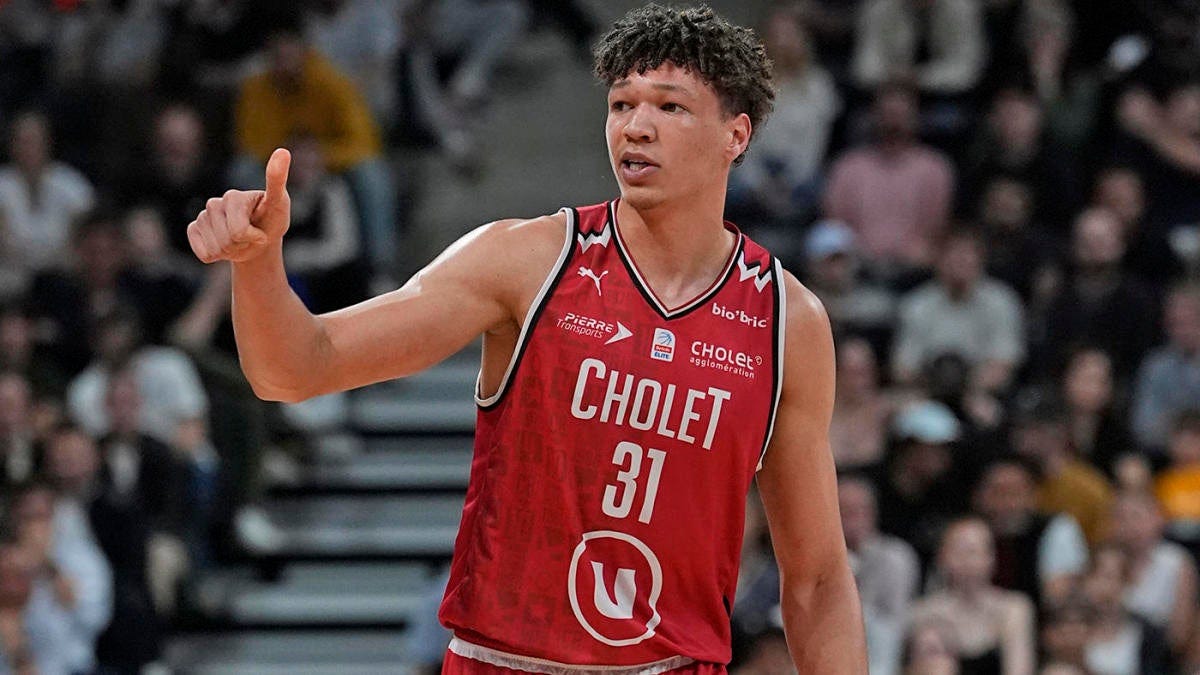


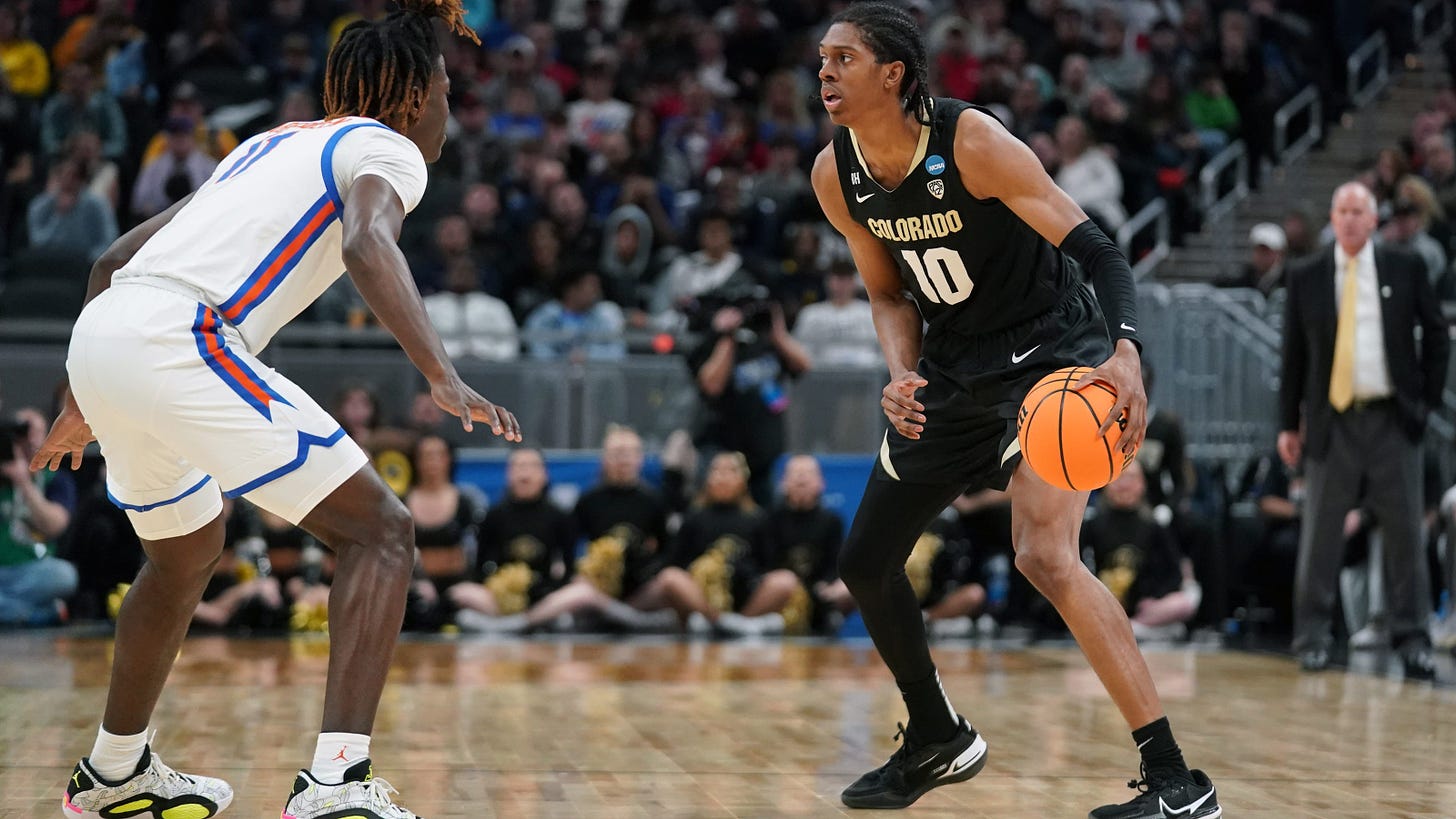

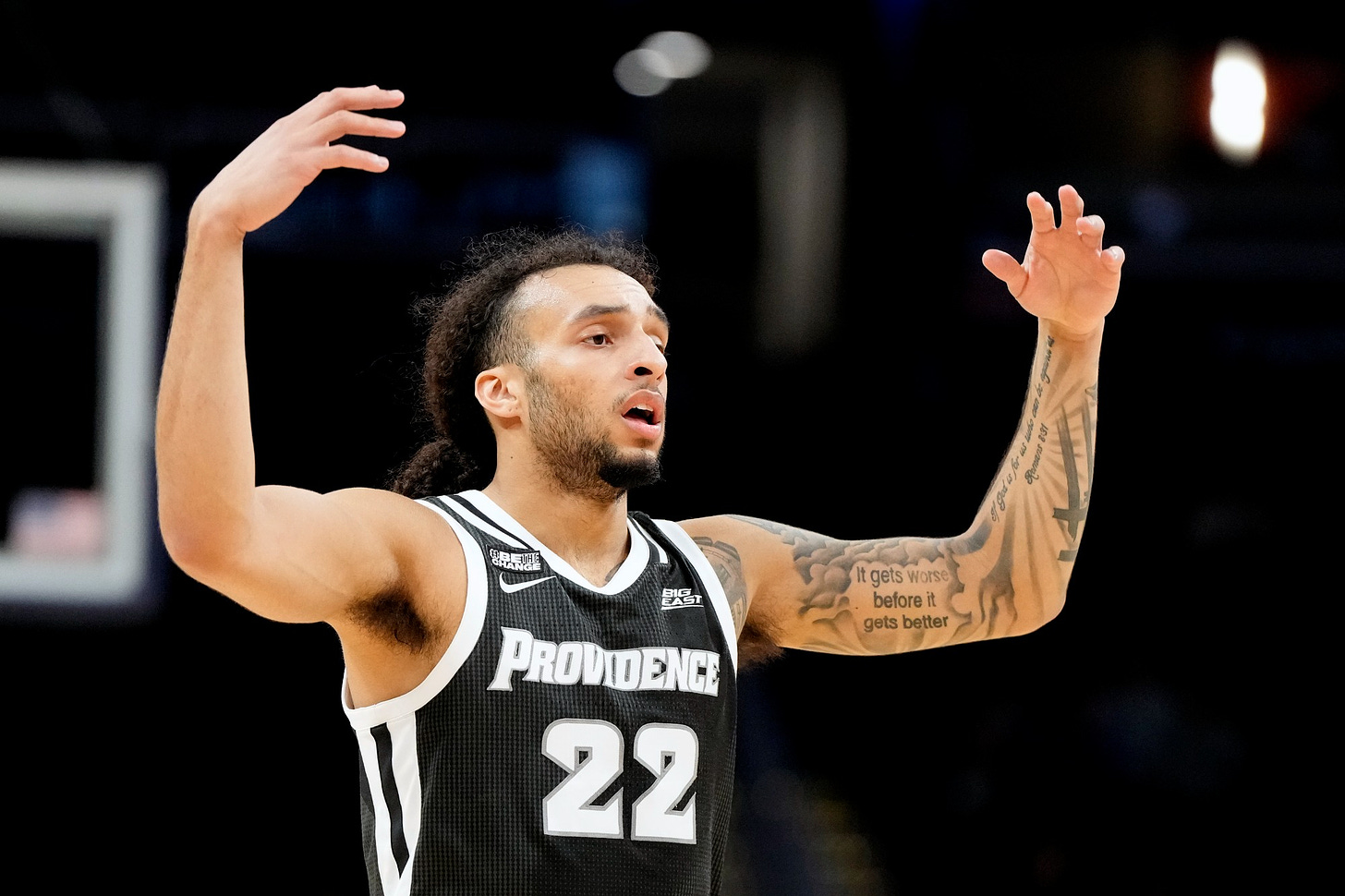
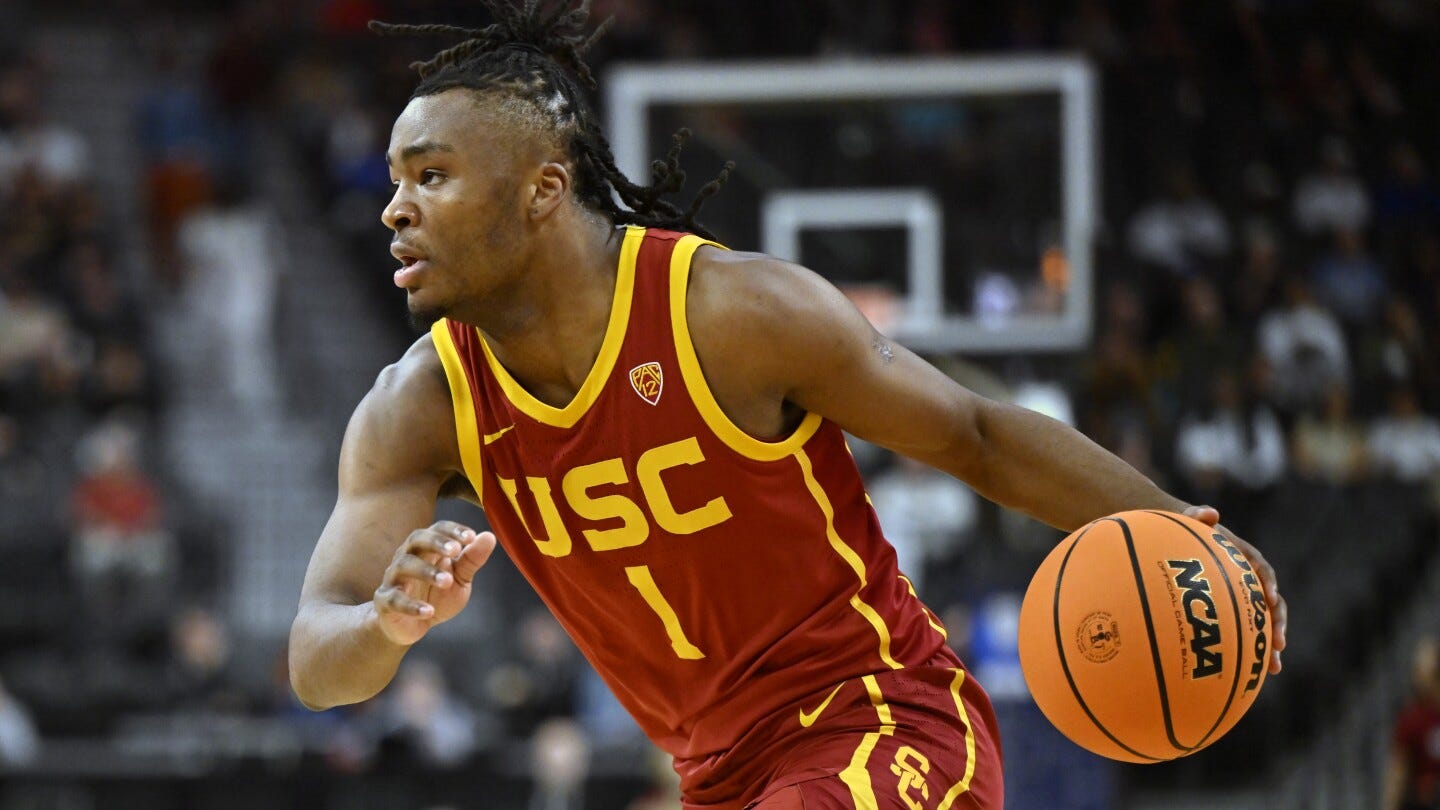

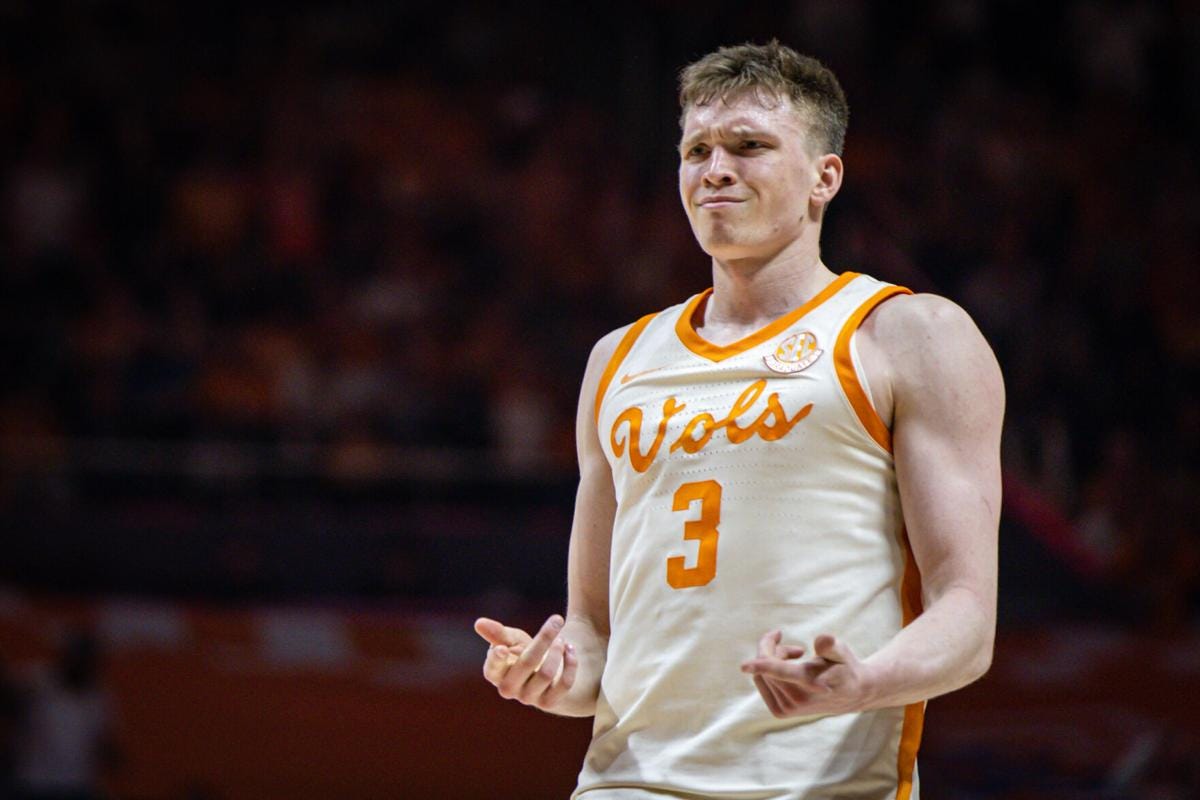
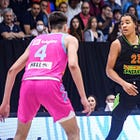
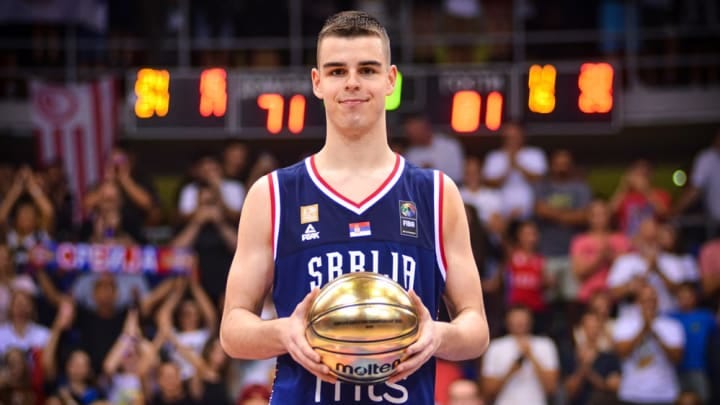

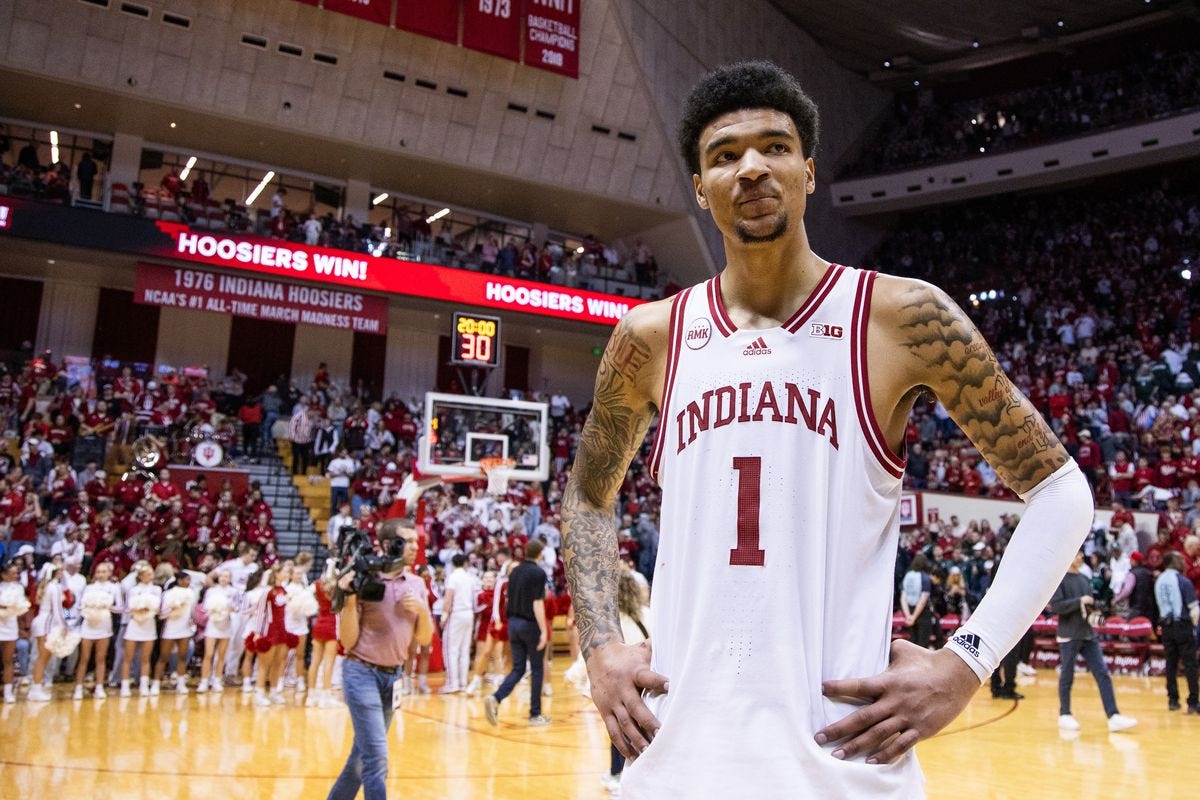

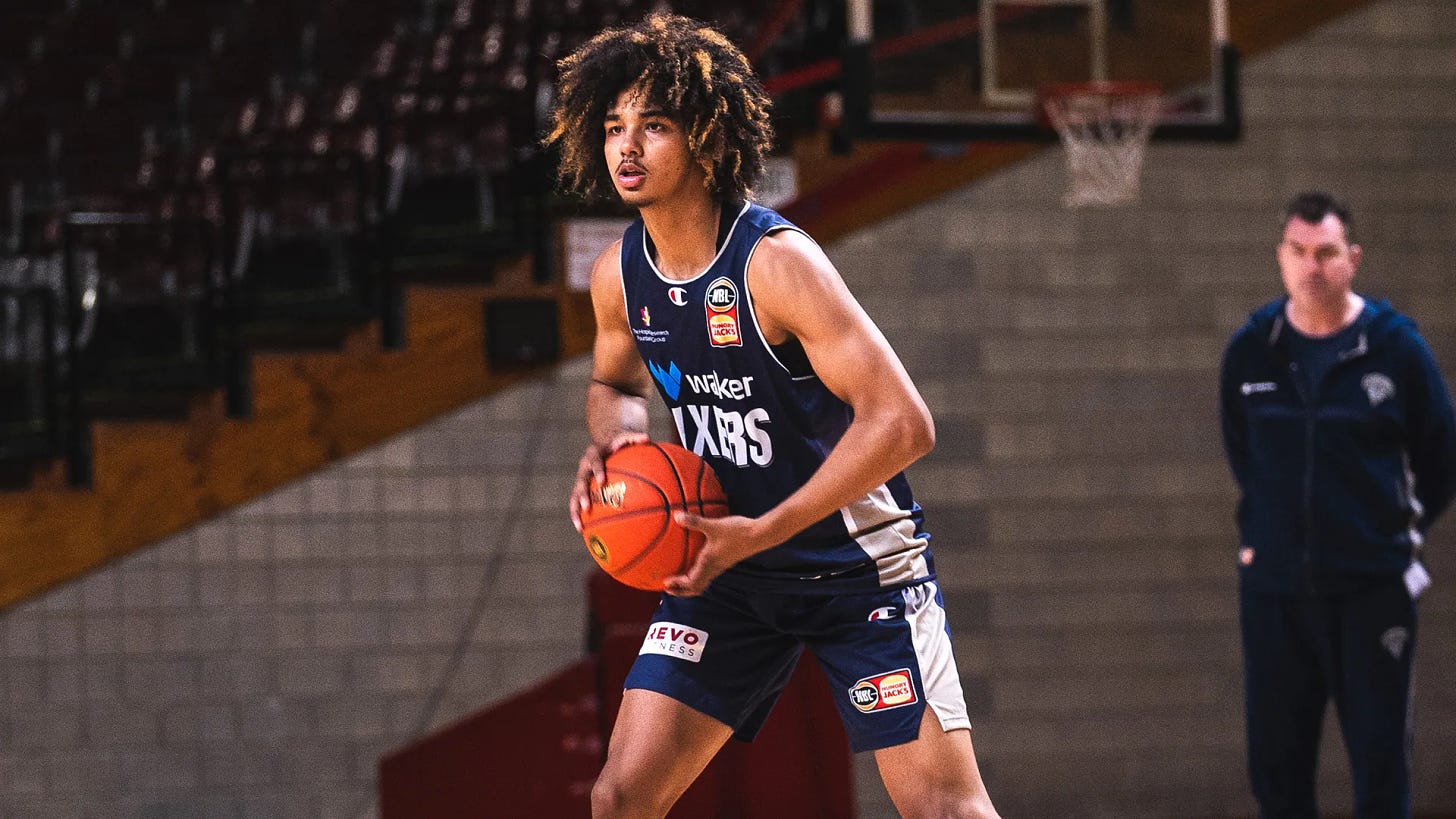
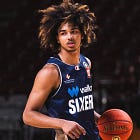
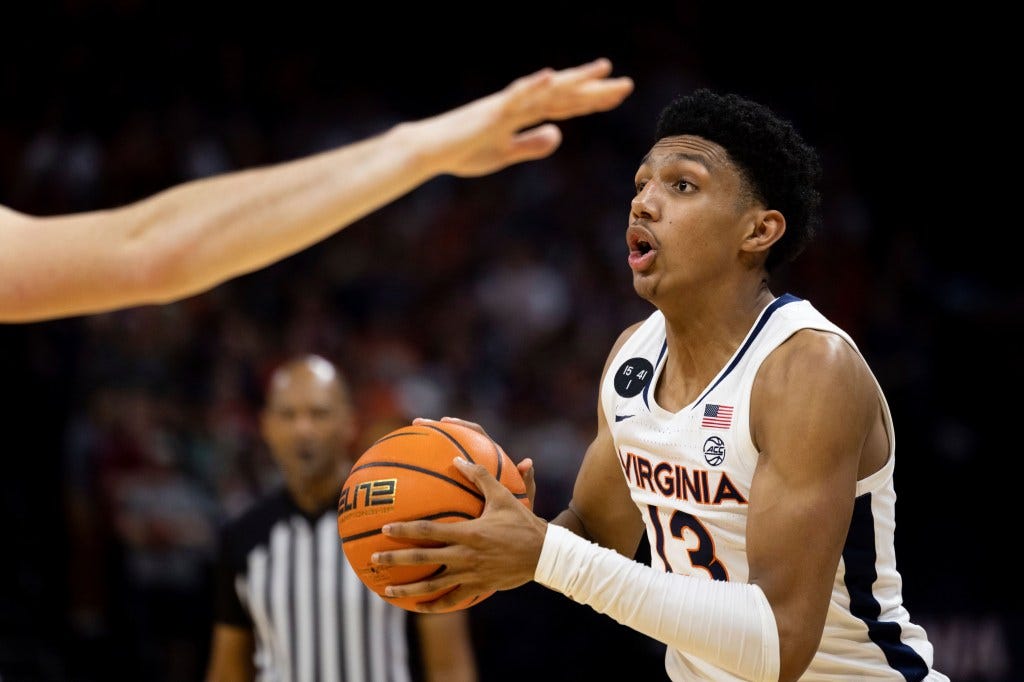

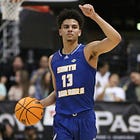
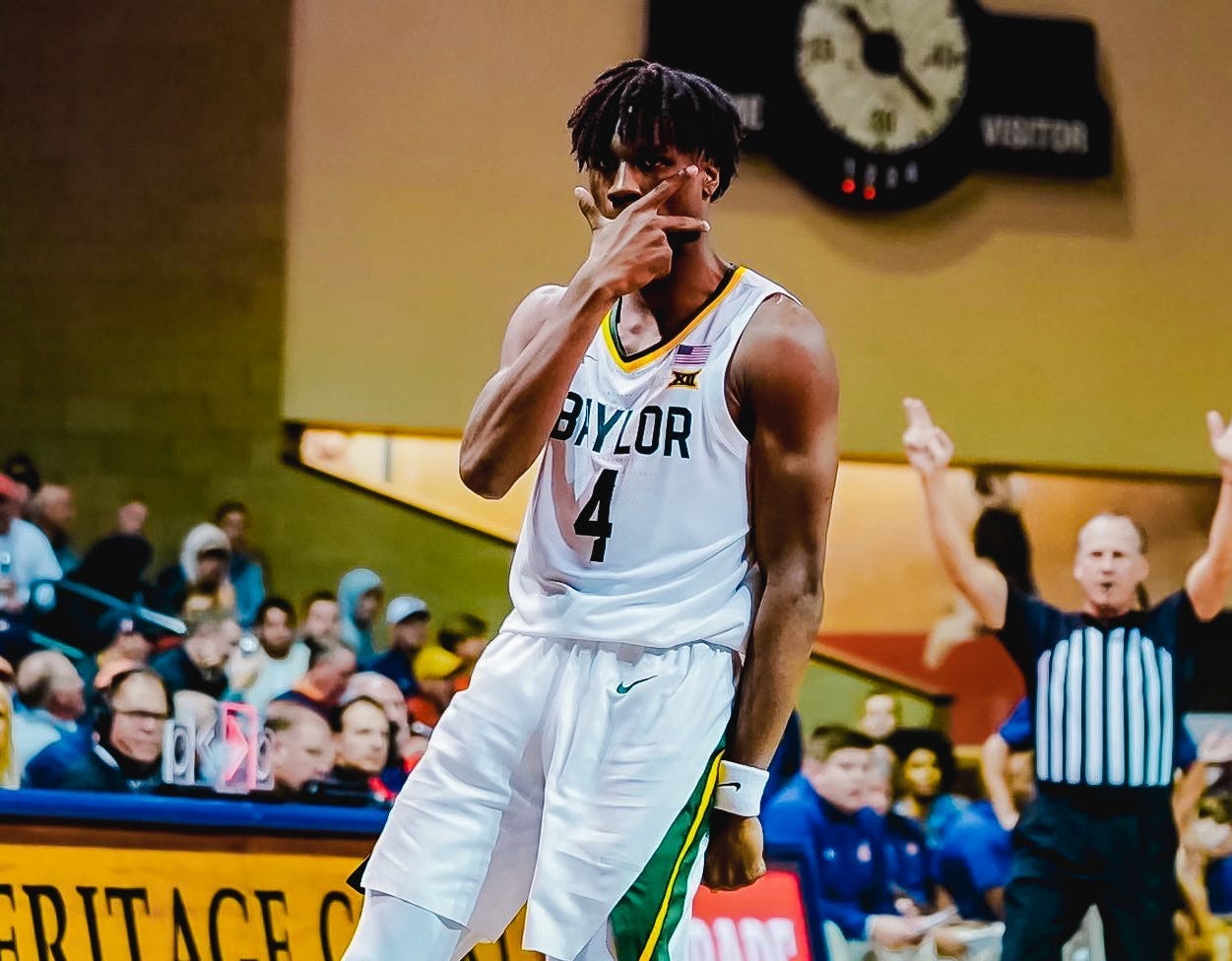
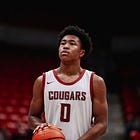
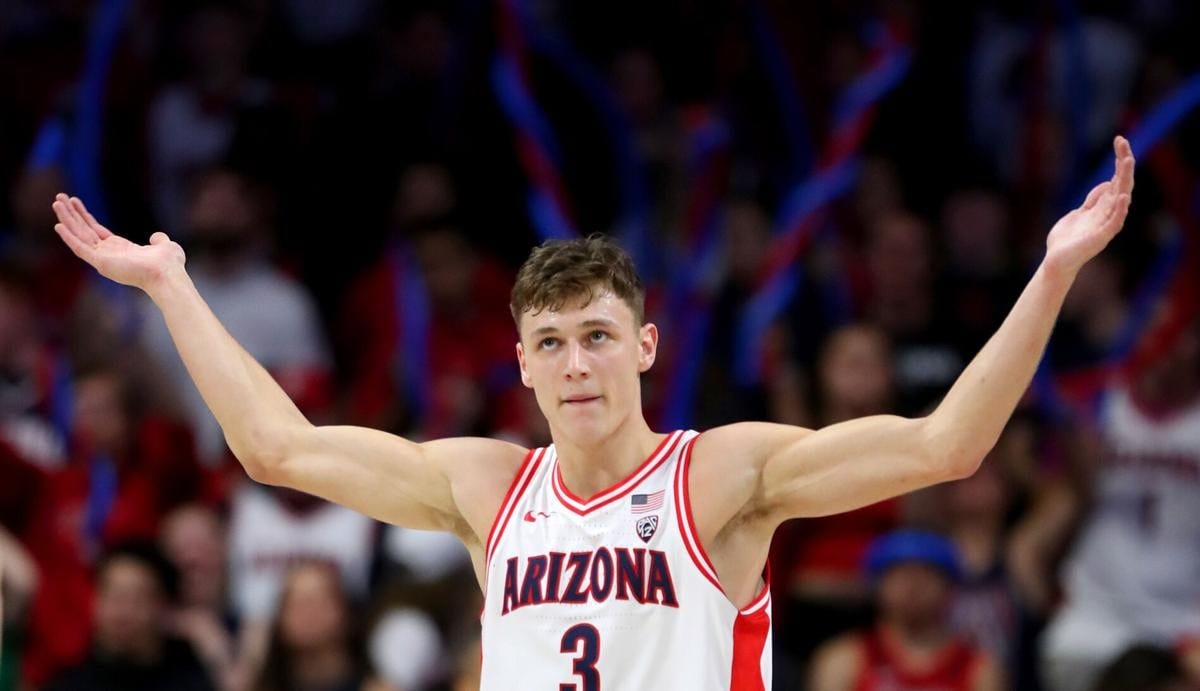
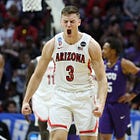
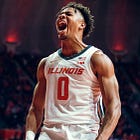
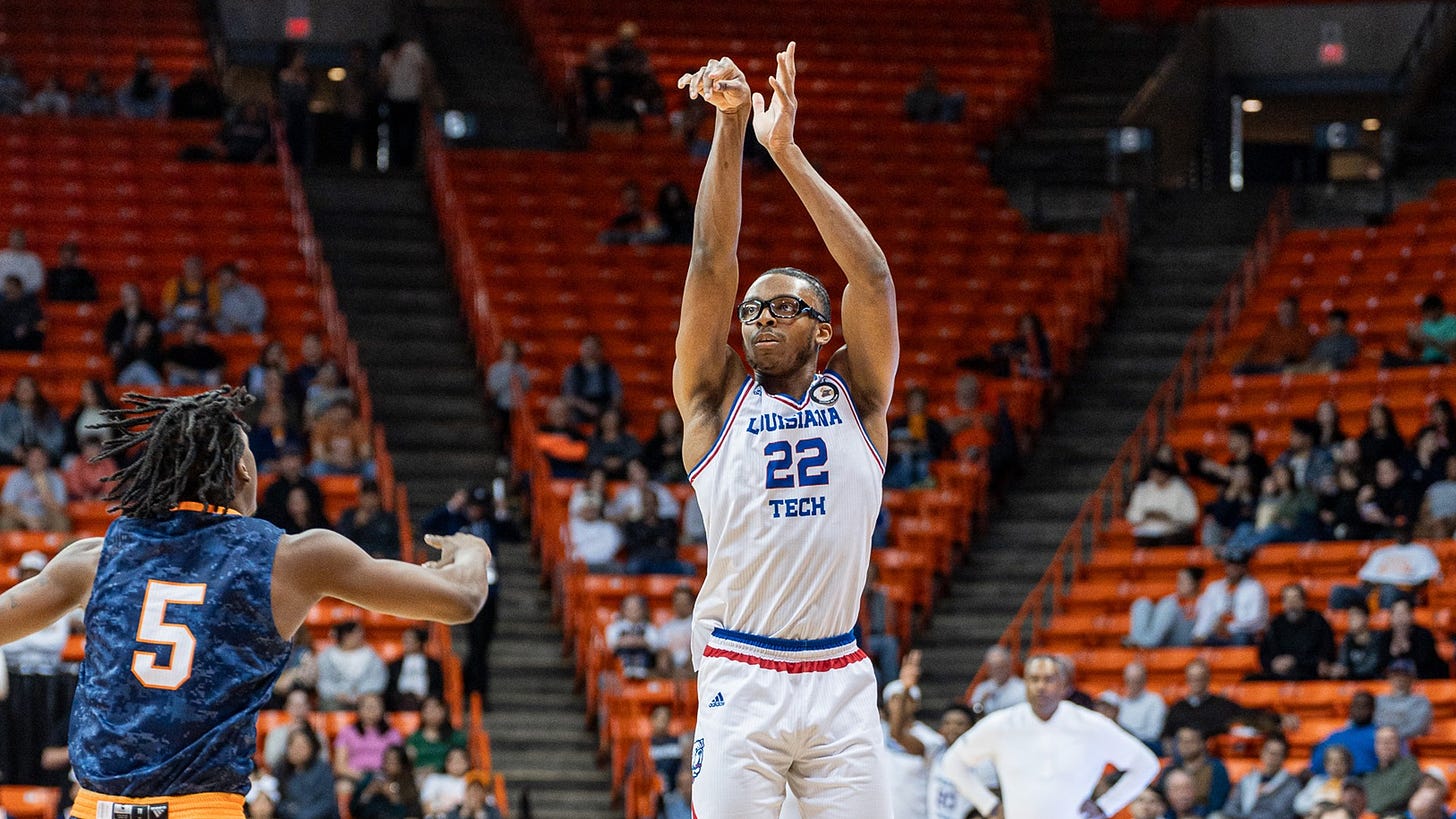
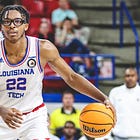
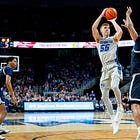
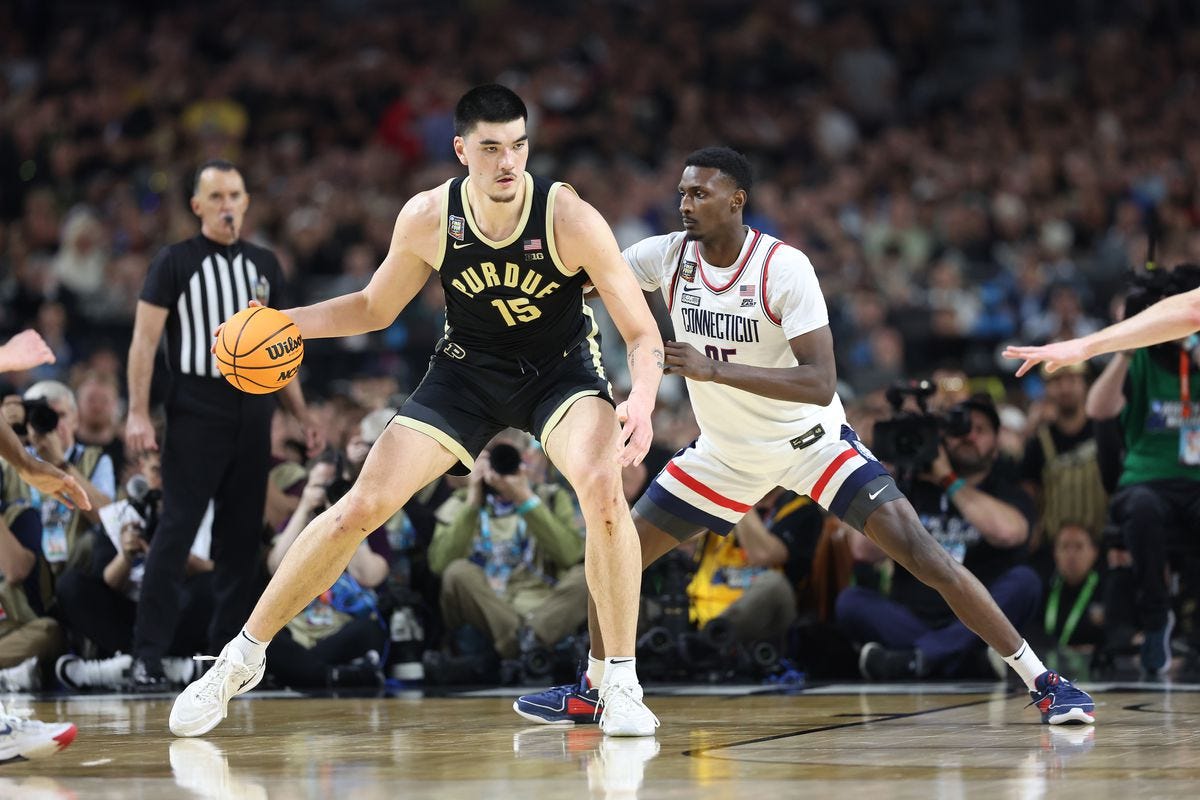
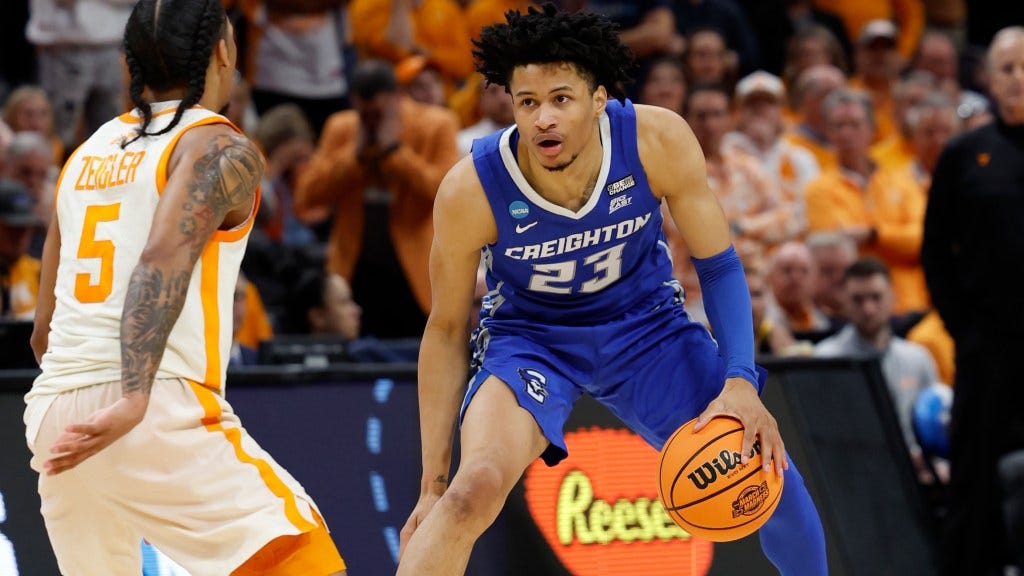
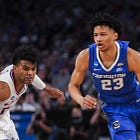

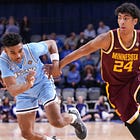


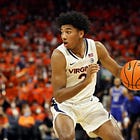
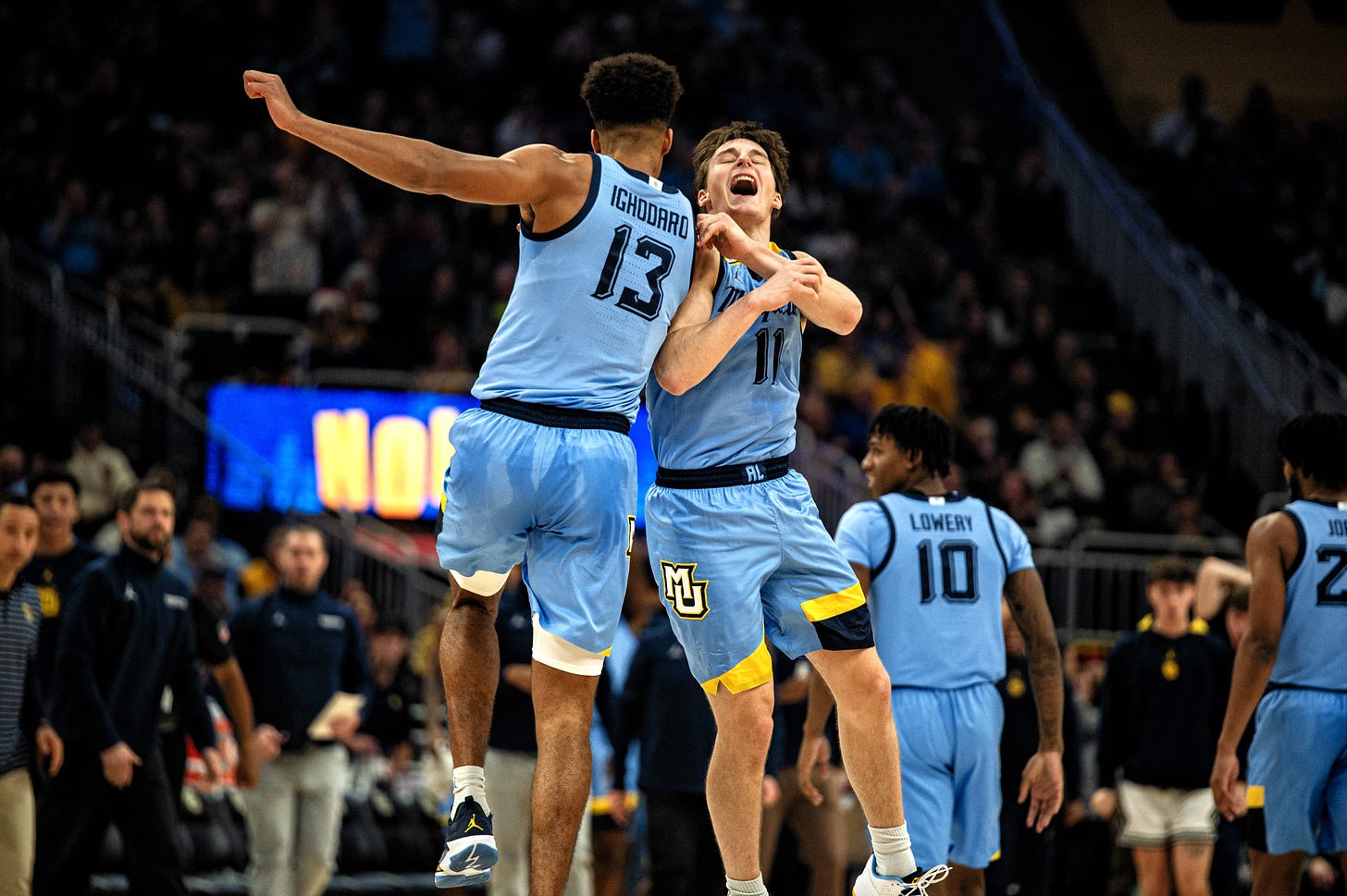
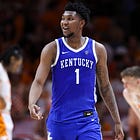
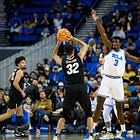


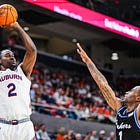
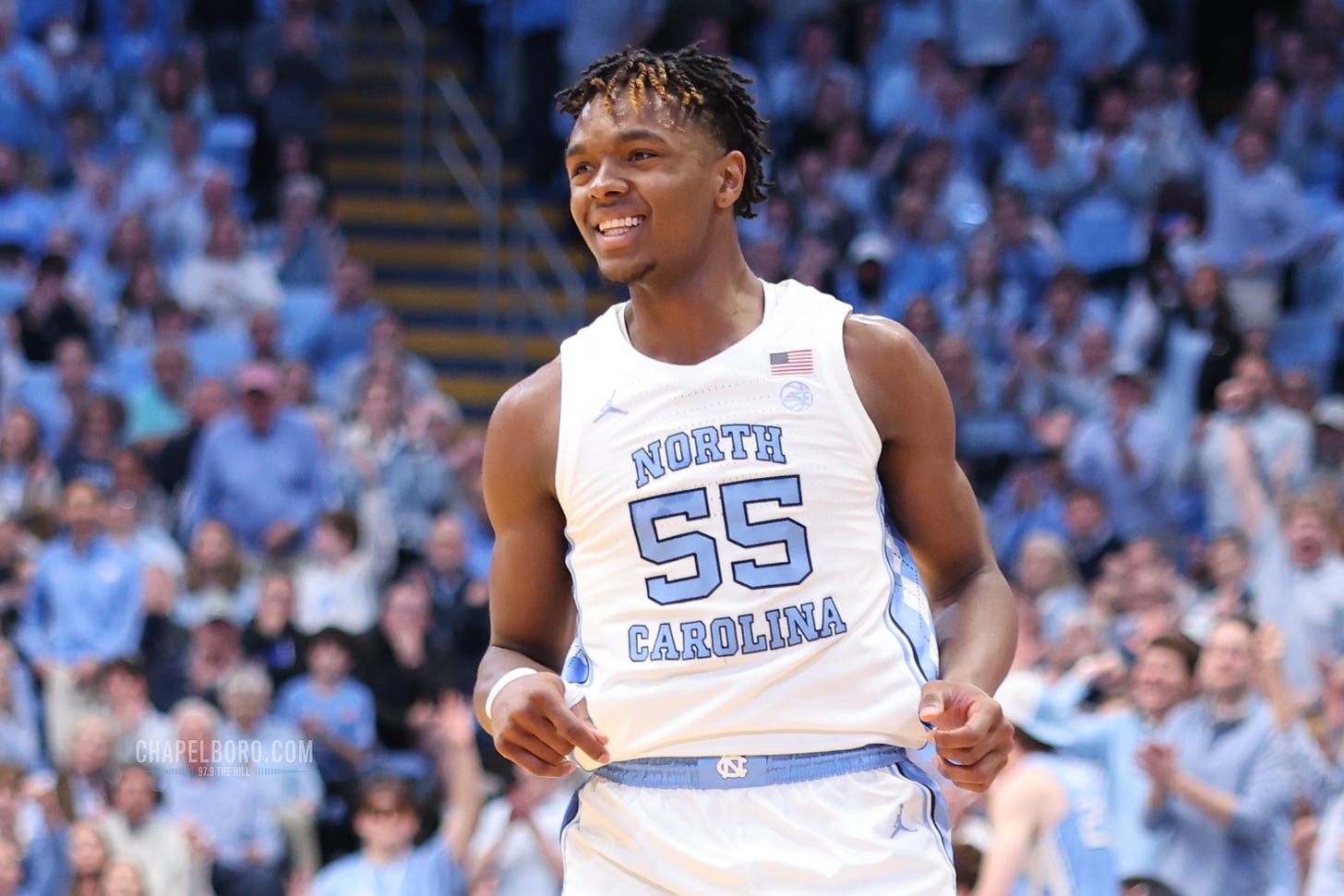

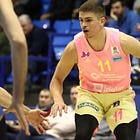
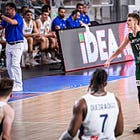
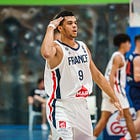


Very fun, Ersin! Thank you for sharing! I see the top of the draft very similarly but am dismayed to not find “my guy” on your board; AJ Johnson!